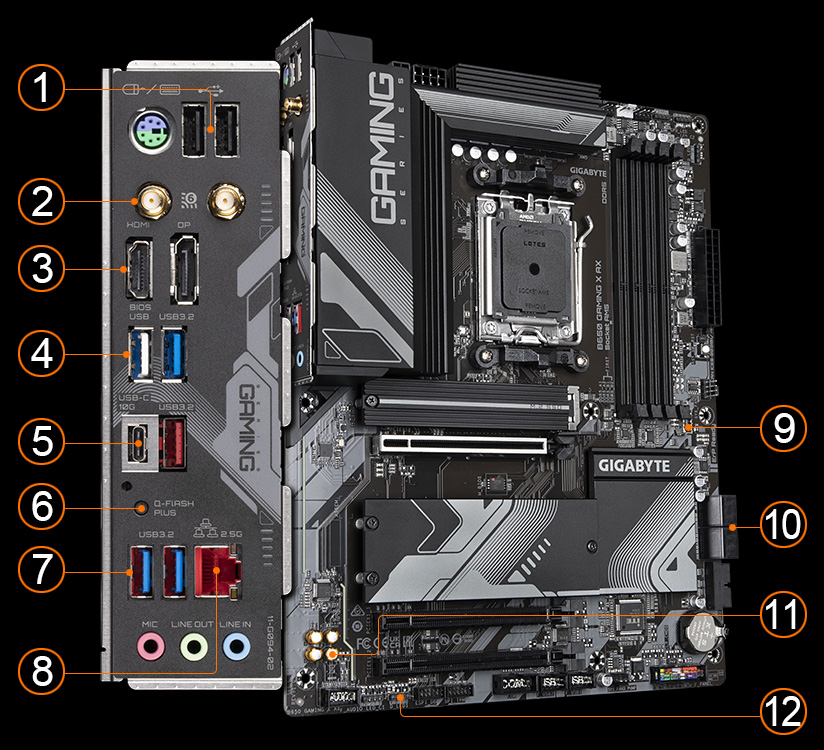
Gigabyte Motherboard Power On But No Display: Troubleshooting Guide
Are you facing the frustrating issue of your Gigabyte motherboard powering on but not displaying anything on your screen? This can be quite perplexing and might leave you wondering what could be the cause. In this comprehensive guide, we will delve into the possible reasons behind this problem and provide you with step-by-step solutions to help you resolve it.
Before we dive into troubleshooting, it’s crucial to understand that there can be multiple factors contributing to this issue. It could be a hardware problem, such as a faulty graphics card or RAM, or it might be a software-related issue like outdated drivers or BIOS settings. By following the troubleshooting steps outlined in this article, you can identify and rectify the problem, getting your Gigabyte motherboard up and running smoothly again.
1. Check the Connections
Before delving into complex solutions, start by checking the basic connections. Ensure that all cables, including the power supply, are securely plugged in. Additionally, examine the connection between your monitor and the graphics card. Loose connections can often be the culprits behind a no display issue.
Summary: Examine all connections, including power supply and monitor-to-graphics card, to ensure they are secure.
2. Verify Monitor and Graphics Card
If your connections seem fine, the next step is to verify if your monitor and graphics card are in working order. Try connecting your monitor to another device to confirm it is functioning correctly. Additionally, if you have an extra graphics card available, swap it out and see if the display issue persists.
Summary: Test your monitor with another device and consider swapping out the graphics card to rule out hardware problems.
3. Reset BIOS Settings
Incorrect BIOS settings can often lead to a no display problem. To resolve this, reset your BIOS settings to their default configuration. You can do this by either removing the CMOS battery for a few minutes or using the Clear CMOS jumper on your motherboard.
Summary: Reset BIOS settings to default using either the CMOS battery removal method or the Clear CMOS jumper.
4. Test RAM Modules
Defective RAM modules can cause various issues, including no display. To determine if this is the problem, try booting your system with a single RAM stick at a time. If the display works with one stick but not the other, you may have a faulty RAM module that needs to be replaced.
Summary: Test each RAM stick individually to identify if any are faulty and require replacement.
5. Update Graphics Card Drivers
Outdated or incompatible graphics card drivers can also result in a no display situation. Visit the manufacturer’s website and download the latest drivers specifically designed for your graphics card model. Install the updated drivers and restart your system to see if the issue is resolved.
Summary: Update your graphics card drivers to the latest version available to ensure compatibility and resolve any software-related issues.
6. Check Power Supply Unit
A malfunctioning power supply unit (PSU) can cause various hardware problems, including a no display issue. Check if the PSU is providing enough power to all components. Consider testing the system with a different PSU if available.
Summary: Ensure that the power supply unit is functioning correctly and providing sufficient power to all components.
7. Inspect CPU and Socket
Faulty CPU or socket connections can prevent your system from displaying anything. Carefully inspect the CPU for any damage or bent pins. Likewise, examine the CPU socket on the motherboard for any abnormalities. If any issues are found, consult a professional for further assistance.
Summary: Thoroughly inspect the CPU and socket for any damage or abnormalities that may be causing the display problem.
8. Clear CMOS Memory
In some cases, clearing the CMOS memory can help resolve the no display issue. Follow the instructions provided in your motherboard’s manual to clear the CMOS memory effectively.
Summary: Clear the CMOS memory according to your motherboard’s manual to potentially fix the no display problem.
9. Update BIOS
An outdated BIOS version can sometimes lead to compatibility issues and result in a no display situation. Visit the Gigabyte website, locate your motherboard model, and download the latest BIOS update. Follow the instructions provided by Gigabyte to successfully update your BIOS.
Summary: Update your motherboard’s BIOS to the latest version to ensure compatibility and potentially resolve the no display issue.
10. Seek Professional Assistance
If all else fails, it might be time to consult a professional. A certified technician will have the expertise to diagnose and troubleshoot the problem more comprehensively. They can help you pinpoint the exact cause and offer a suitable solution.
Summary: If none of the above solutions work, consider seeking professional assistance to resolve the no display problem.
In conclusion, a Gigabyte motherboard powering on but not displaying can be a frustrating issue to encounter. However, by systematically troubleshooting the possible causes outlined in this guide, you can identify and resolve the problem effectively. Remember to follow each step carefully and seek professional help if needed. With patience and perseverance, you’ll have your Gigabyte motherboard up and running with a display in no time.